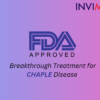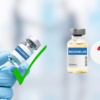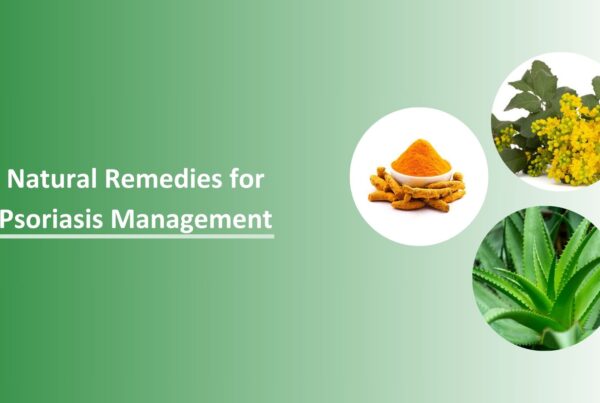Homocystinuria may be rare, but its impact on those affected and their families is profound. As leaders in healthcare innovation, we’re passionate about shedding light on this condition and empowering healthcare professionals with the knowledge and resources.
What is Homocystinuria?
Homocystinuria is a rare inherited disorder that disrupts the body’s ability to process the essential amino acid methionine. Amino acids, the building blocks of protein, are crucial for growth and maintaining the body’s nitrogen balance.
In infants, this condition can manifest within the first few years of life and, in rarer cases, lead to underweight children. Without treatment, homocystinuria can result in severe and potentially fatal complications. This disorder prevents the body from metabolizing methionine, causing a harmful accumulation of substances in the blood and urine.
Methionine: Functions and Implications
Methionine, an essential amino acid vital for numerous bodily functions, serves as a fundamental building block for proteins and contributes to the synthesis of critical molecules like creatine, carnitine, and melatonin. It also acts as a precursor to S-adenosylmethionine (SAMe), facilitating DNA methylation and neurotransmitter synthesis.
Despite its significance, elevated levels of methionine pose risks, notably in conditions like homocystinuria, where improper processing leads to a buildup of homocysteine and methionine, contributing to various health issues such as intellectual disability and skeletal abnormalities. While methionine is obtainable from animal-based protein sources, excessive intake can elevate blood levels, emphasizing the importance of dietary balance and monitoring in affected individuals.
Inheritance Pattern Worldwide vs India
Classical homocystinuria, the predominant form of the condition, arises from mutations in the CBS gene, following an autosomal recessive inheritance pattern. While globally homocystinuria affects one in 344,000 individuals, prevalence rates can be higher in certain regions like Ireland (1 in 65,000) and Germany (1 in 17,500), with consanguineous marriages in the Middle East and North Africa leading to elevated incidences. Other studies suggest that the prevalence of homocystinuria due to CBS deficiency may be as high as one in 6,400 to one in 20,000 in various European countries. These figures indicate significant variability in the prevalence of homocystinuria among different regions and populations.
Autosomal recessive inheritance necessitates two mutated gene copies for manifestation, while carriers typically remain asymptomatic. In essence, homocystinuria stems from gene mutations impacting amino acid metabolism, with prevalence varying among populations and nations.
In India, classical homocystinuria, predominantly caused by mutations in the CBS gene and inherited through an autosomal recessive pattern, prevails as the most common form of the disorder. This implies that for a child to develop the condition, both parents must pass on the non-functional gene.
A recent study in 2020, focusing on a North Indian cohort with classical homocystinuria, unveiled seven new genetic variants within the CBS gene. Additionally, the study highlighted the inaugural instance of the rare ABCD4 defect in cobalamin metabolism documented in India.
In each pregnancy, there is a 25% chance that both carrier parents will pass on the abnormal gene, resulting in an affected child. There is a 50% chance of having a child who is a carrier like the parents, and a 25% chance of the child receiving normal genes from both parents. This risk is consistent for both males and females.
Symptoms and Signs
Homocystinuria due to CBS deficiency presents with highly variable symptoms, ranging from mild to life-threatening complications. Individuals can be categorized into two groups: those responsive to pyridoxine (vitamin B6) therapy and those who are not. Even those responsive to therapy may experience severe symptoms. Detecting and treating homocystinuria promptly is crucial for symptom prevention or reduction.
Affected individuals may experience a wide range of symptoms affecting different organ systems, including the eyes, central nervous system (CNS), skeleton, and vascular system. Ocular abnormalities, notably ectopia lentis (lens displacement), myopia, and iridodonesis (eye quivering) are common, often appearing after the first year of life. Less frequent eye issues include cataracts, optic nerve degeneration, glaucoma, and retinal detachment.
Developmental delays may signal homocystinuria in children, with milestones like sitting, standing, and speaking delayed. Intellectual disability can vary, and about 20% of children may develop seizures. Psychiatric issues, including depression and anxiety, may also arise, more commonly in adults.
Skeletal abnormalities may manifest later in childhood, including dolichostenomelia (thinning and lengthening of long bones), knock knees, pes cavus (highly arched foot), scoliosis, and pectus deformities. Osteoporosis is a concern due to bone density loss.
Homocystinuria increases the risk of thromboembolism, potentially leading to strokes or pulmonary embolisms. Additional findings may include fragile skin, hypopigmentation, rashes, and hepatic or pancreatic issues. Kyphosis and spontaneous pneumothorax have also been reported. Early detection and intervention are crucial for managing symptoms and preventing complications in homocystinuria due to CBS deficiency.
Types of Homocystinuria
There are multiple types of homocystinuria, primarily resulting from variants in six genes: CBS, MTHFR, MTR, MTRR, and MMADHC
Classical homocystinuria, the most common form of the disorder, results from a deficiency in the enzyme cystathionine beta-synthase (CBS). This enzyme is essential for converting homocysteine into cysteine, another amino acid vital for bodily functions. In classical homocystinuria, the CBS gene either produces insufficient CBS enzyme or produces dysfunctional enzyme. Response to treatment with vitamin B6 supplements categorizes this type of homocystinuria further.
Another form of homocystinuria stems from defects in cobalamin (vitamin B12) cofactor metabolism. This process involves converting homocysteine back into methionine, requiring the proper functioning of vitamin B12. When the body fails to complete this conversion process due to enzyme deficiencies or defects, homocystinuria results from a cobalamin defect.
Role of Cystathionine beta-synthase (CBS) Enzyme
Cystathionine beta-synthase (CBS) is an enzyme crucial for the transsulfuration pathway, converting homocysteine to cystathionine using vitamin B6 as a cofactor. This pathway is vital for maintaining normal homocysteine levels, which is crucial for health. Mutations in the CBS gene can lead to CBS deficiency and homocystinuria, a rare genetic disorder marked by elevated homocysteine levels in the blood and urine.
Diagnosis of Homocystinuria
Early detection is crucial for managing homocystinuria effectively. Typically, screening begins shortly after birth via blood and urine tests.
Diagnosing homocystinuria resulting from CBS deficiency involves recognizing characteristic features and conducting a thorough assessment, including clinical evaluation, patient history, and specialized tests to detect elevated levels of homocysteine, methionine, or homocysteine in plasma or urine.
Confirmation often requires genetic testing to identify mutations in both copies of the CBS gene and enzyme function tests in specific cells. Newborn screening programs can also identify homocystinuria due to CBS deficiency, although not all states include it in their screening panels.
Methionine levels are typically measured, but they may not be elevated enough for immediate detection after birth, especially in infants with the pyridoxine-responsive form of the disorder, which may not be detected due to normal methionine levels in newborn screening samples taken shortly after birth.
Most infants diagnosed through newborn screening have the pyridoxine-unresponsive form of homocystinuria due to CBS deficiency.
Cost Variation Of Homocysteine Screening In India
The cost of a homocysteine test in Delhi can fluctuate based on various factors, including the laboratory’s location, test quality, and the patient’s insurance coverage. However, as an average estimate, the price for a homocysteine test in Delhi is approximately INR 899.
For specific genetic tests like the CBS Gene Homocystinuria due to cystathionine beta-synthase deficiency NGS Genetic DNA Test and the MTRR Gene Homocystinuria-megaloblastic anemia, cbl E type NGS Genetic DNA Test, the cost is typically fixed at 20,000.00 INR. It’s important to note that prices may vary depending on individual circumstances and laboratory policies.
Treatment for Homocystinuria
While there is currently no cure for HCU, it can be effectively managed through a combination of dietary modifications, medication, and specialized medical formulas tailored to individuals with HCU. Homocystinuria due to CBS deficiency necessitates comprehensive treatment to mitigate associated symptoms by regulating homocysteine levels in the plasma. The treatment regimen encompasses various interventions:
Pyridoxine Therapy:
Pyridoxine (vitamin B6) therapy serves as a primary intervention, effectively reducing homocysteine and methionine levels in approximately 50% of individuals. However, a pyridoxine response assessment is necessary to gauge effectiveness, with some requiring folate supplementation.
Dietary Restrictions:
A crucial component involves adopting a diet low in protein and methionine. However, adherence to this dietary regimen, especially for individuals diagnosed later in life, can pose challenges due to taste preferences.
Supplemental Metabolic Foods:
Those adhering to a low-protein, low-methionine diet may necessitate methionine-free supplemental metabolic foods to ensure adequate intake of essential amino acids. Initiating this diet during infancy has proven effective in preventing or delaying symptom onset.
Cysteine Supplementation:
Cysteine supplementation may complement the low-protein, low-methionine diet to address amino acid deficiencies. This is particularly important as individuals with homocystinuria due to CBS deficiency often have low levels of cysteine.
Betaine Therapy:
Betaine therapy often used adjunctively with dietary measures, aids in lowering homocysteine levels in individuals unresponsive to pyridoxine therapy. Betaine for oral solution (Cystadane®) has FDA approval for treating homocystinuria due to CBS deficiency.
Management of Specific Symptoms:
Symptomatic manifestations, such as ectopia lentis (dislocated lenses) or skeletal malformations, may necessitate surgical intervention. However, individuals undergoing surgery require specialized care due to the increased risk of post-surgical thromboembolic complications associated with homocystinuria.
In addition to treatment modalities, genetic counseling is strongly recommended for affected individuals and their families to understand the hereditary implications of homocystinuria due to CBS deficiency. This holistic approach aims to optimize management strategies and improve patient outcomes.
Betaine Market Value and Its Role
In 2023, the global betaine market was valued at around $5.5 billion, experiencing a compound annual growth rate (CAGR) of 5.30% from 2023 to 2030. Betaine finds extensive applications across various sectors, notably in nutrition and personal care items. Although its utilization in treating homocystinuria constitutes a minor segment of the total market, it nonetheless plays a role in bolstering the overall expansion of the betaine market.
In the treatment of homocystinuria, betaine serves as a pivotal methyl group donor, facilitating the conversion of homocysteine back into methionine. This enzymatic process, mediated by betaine-homocysteine methyltransferase (BHMT), effectively lowers homocysteine levels in affected patients, leading to improved health outcomes.
Dietary Considerations
Children with homocystinuria require a modified diet throughout their entire lives. Specialist metabolic dieticians provide guidance on reducing methionine intake and maintaining proper nutrient balance.
The dietary regimen for managing homocystinuria primarily involves restricting high-protein foods, especially those containing methionine, which converts to homocysteine in the body. Patients are advised to avoid or limit consumption of items such as meat, fish, eggs, cheese, bread, pasta, nuts, seeds, soya, Quorn, and tofu.
While regular bread and pasta can be consumed in moderation, individuals are often encouraged to explore low-protein alternatives for variety and to mitigate concerns about excessive protein intake. Vegetables and fruits are generally allowed, with careful portion control to manage protein intake effectively. Medical formulas and low-protein substitutes may be necessary to ensure adequate nutrient intake.
In infants, a controlled amount of methionine (protein) is typically provided through breast milk or measured quantities of infant formula, with regular monitoring by a specialist metabolic dietitian. For patients with pyridoxine-responsive homocystinuria, strict dietary modifications may not be necessary if they receive sufficient vitamin B6 supplementation.
It’s crucial to seek guidance from a doctor or registered dietitian for personalized advice on managing homocystinuria through dietary adjustments.
FSMPs for homocystinuria:
Homocystinuria patients are advised to incorporate Foods for Special Medical Purposes (FSMPs) into their diet regimen when appropriate, as part of a comprehensive strategy to manage their condition. These specialized products are carefully formulated to restrict high-protein foods, especially those abundant in methionine, which can exacerbate the accumulation of homocysteine in the bloodstream. FSMP for homocystinuria includes,
- Reduced methionine levels
- Balanced amino acid composition
- Essential micronutrient inclusion
These specialized formulations are intended to promote healthy growth and development while mitigating the buildup of homocysteine in the blood.
While FSMPs may not be necessary for every individual with homocystinuria, they can offer significant benefits for those whose condition cannot be effectively controlled through conventional dietary measures alone or who struggle to adhere to a restricted diet.
Continuing lifelong management is essential for individuals with HCU. Medical formulas constitute a vital aspect of their dietary regimen, serving as a cornerstone in their care. These formulas utilize individual amino acids as a protein source, intentionally omitting methionine to prevent adverse effects.
By supplying crucial nutrients like calories, vitamins, and minerals, medical formulas foster normal growth in HCU patients while ensuring safe protein consumption. Seeking guidance from a healthcare provider before making any dietary adjustments or introducing FSMPs is imperative. Tailored recommendations are essential, accounting for factors such as condition severity and treatment response.
Market Analysis: Homocystinuria
According to various market research analyses, the global homocystinuria market is poised for substantial growth in the forthcoming years. Valued at US$ 73.96 million in 2028, it is anticipated to expand at a compound annual growth rate (CAGR) of 3.9% from 2021 to 2028. Another study indicates a robust market size in 2021, projecting a swift revenue CAGR throughout the forecast period.
This growth is fueled by factors like the increasing prevalence of homocystinuria patients, governmental efforts to raise awareness, and heightened demand for treatment options. The market segmentation encompasses methods, end-users, and geographical regions.
Presently, North America leads as the largest regional market, boasting the highest revenue share, while the Asia Pacific region is anticipated to witness the most rapid revenue growth in the coming years.
Enhanced Support for Rare Disease Treatment in India
The new rare disease treatment program marks a major step forward in healthcare accessibility. It provides crucial support to individuals with rare conditions, easing the burden of high treatment costs and ensuring access to vital medications and therapies without financial obstacles.
Furthermore, the Rare Diseases Cell of the Union Ministry of Health & Family Welfare, located in New Delhi, has raised the grant for treating rare conditions from Rs 20 lakh to Rs 50 lakh. Previously, only rare diseases categorized under Group 1 were eligible for the Rs 20 lakh grant, designated for one-time treatment. However, the revised policy extends the enhanced grant to encompass all individuals affected by rare diseases. This expansion aims to alleviate financial strain for a broader spectrum of patients.
The augmented financial support encompasses treatment at government tertiary hospitals and benefits approximately 40% of the population eligible under the Pradhan Mantri Jan Arogya Yojana criteria. Additionally, state governments retain the flexibility to provide aid to individuals managing rare diseases through specialized diets, hormonal supplements, or other cost-effective interventions.
Conclusion
In conclusion, the utilization of Foods for Special Medical Purposes (FSMPs) in managing homocysteine levels presents a promising approach to addressing this metabolic disorder. By offering tailored nutrition designed to restrict methionine intake and maintain balanced amino acid profiles, FSMPs play a crucial role in supporting individuals with homocystinuria.
These specialized formulas provide essential nutrients while mitigating the risk of elevated homocysteine levels, contributing to improved health outcomes and quality of life for affected individuals. As research and development in this field continue to advance, incorporating FSMPs into comprehensive treatment strategies holds great potential for optimizing the management of homocystinuria and enhancing patient well-being.
Written By
Aswini PriyaMedical Content Writer
Reviewed By
Dr. AnchalMedico Expert
Last Updated
12 Mar 2024 | 11:00 AM (IST)









